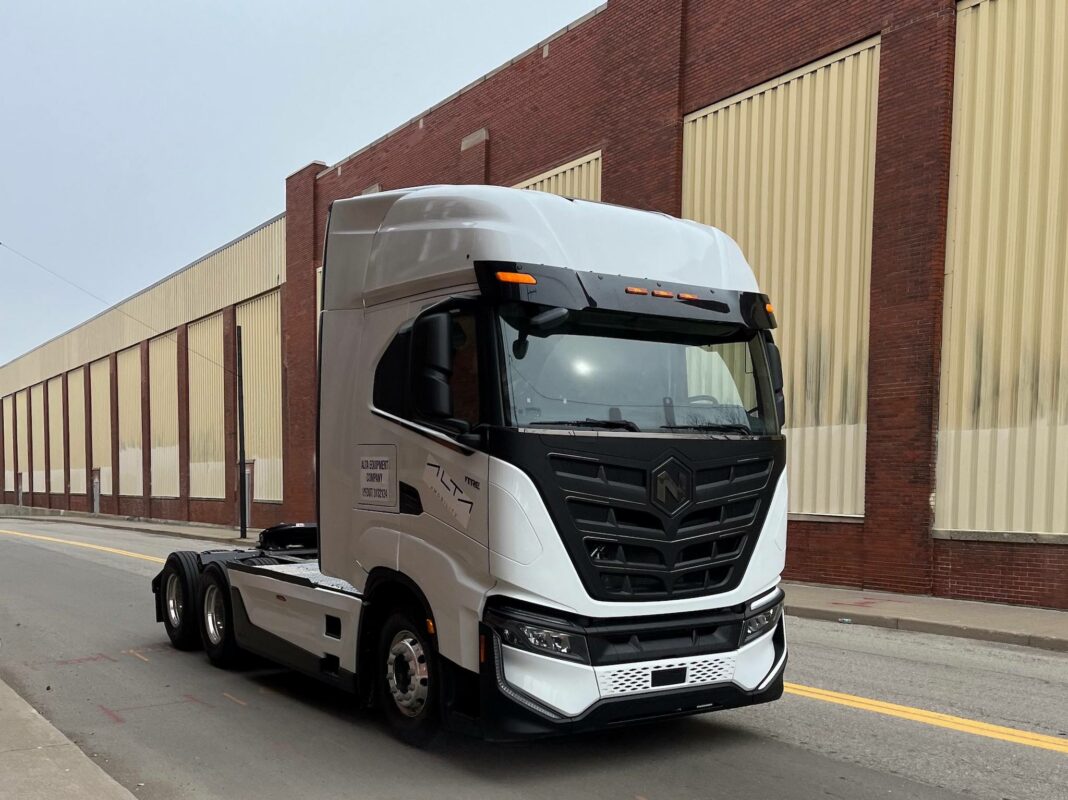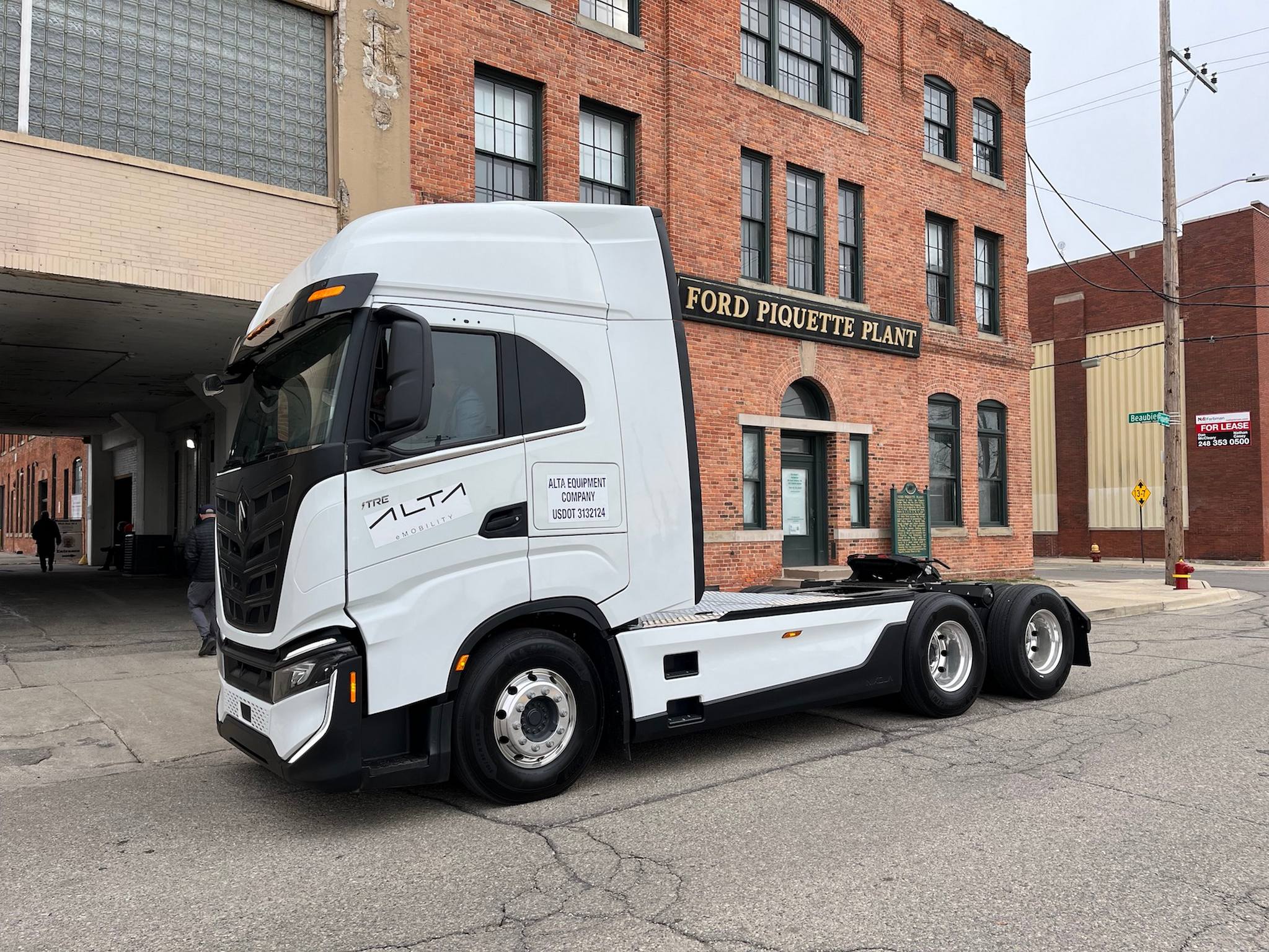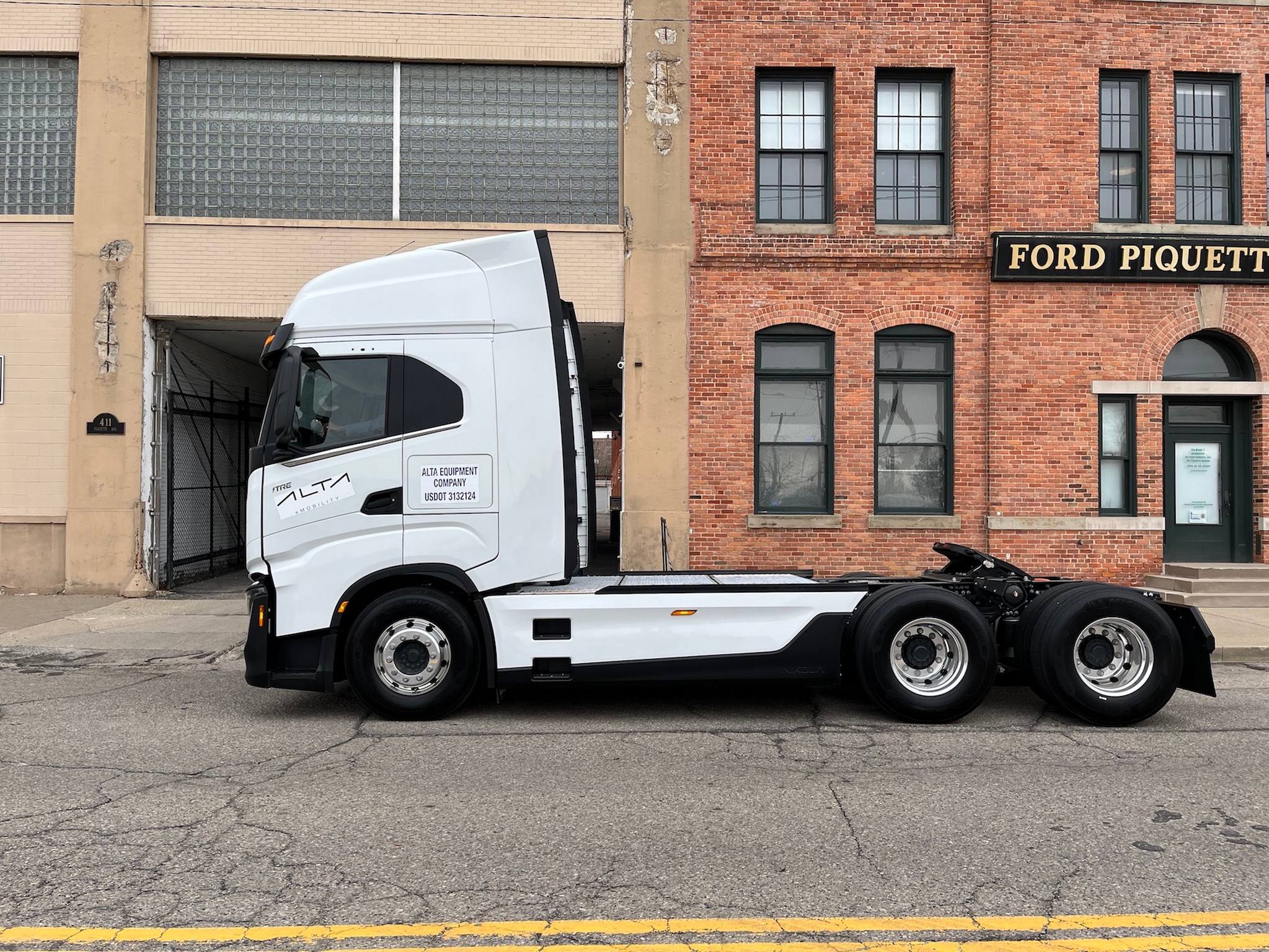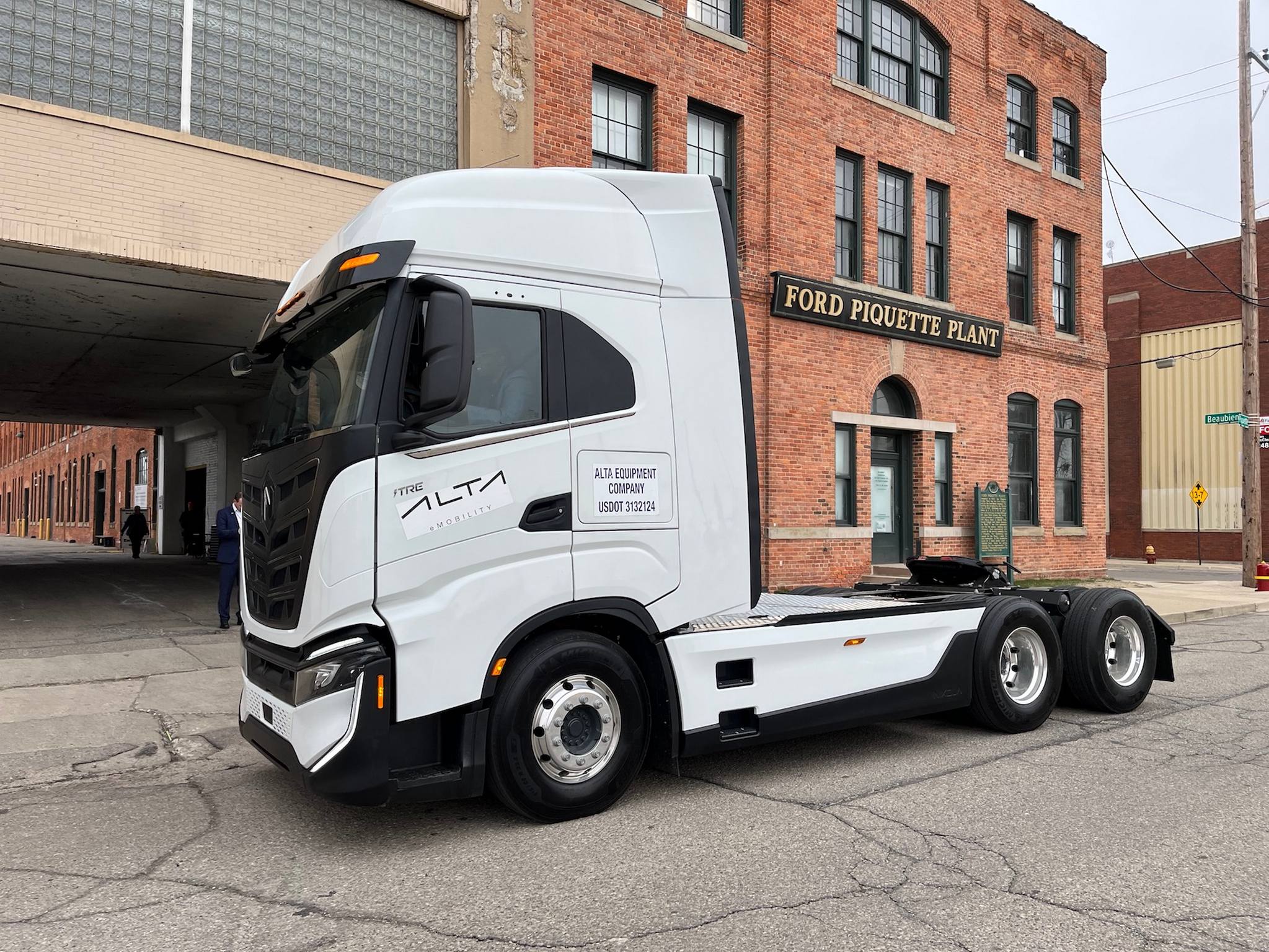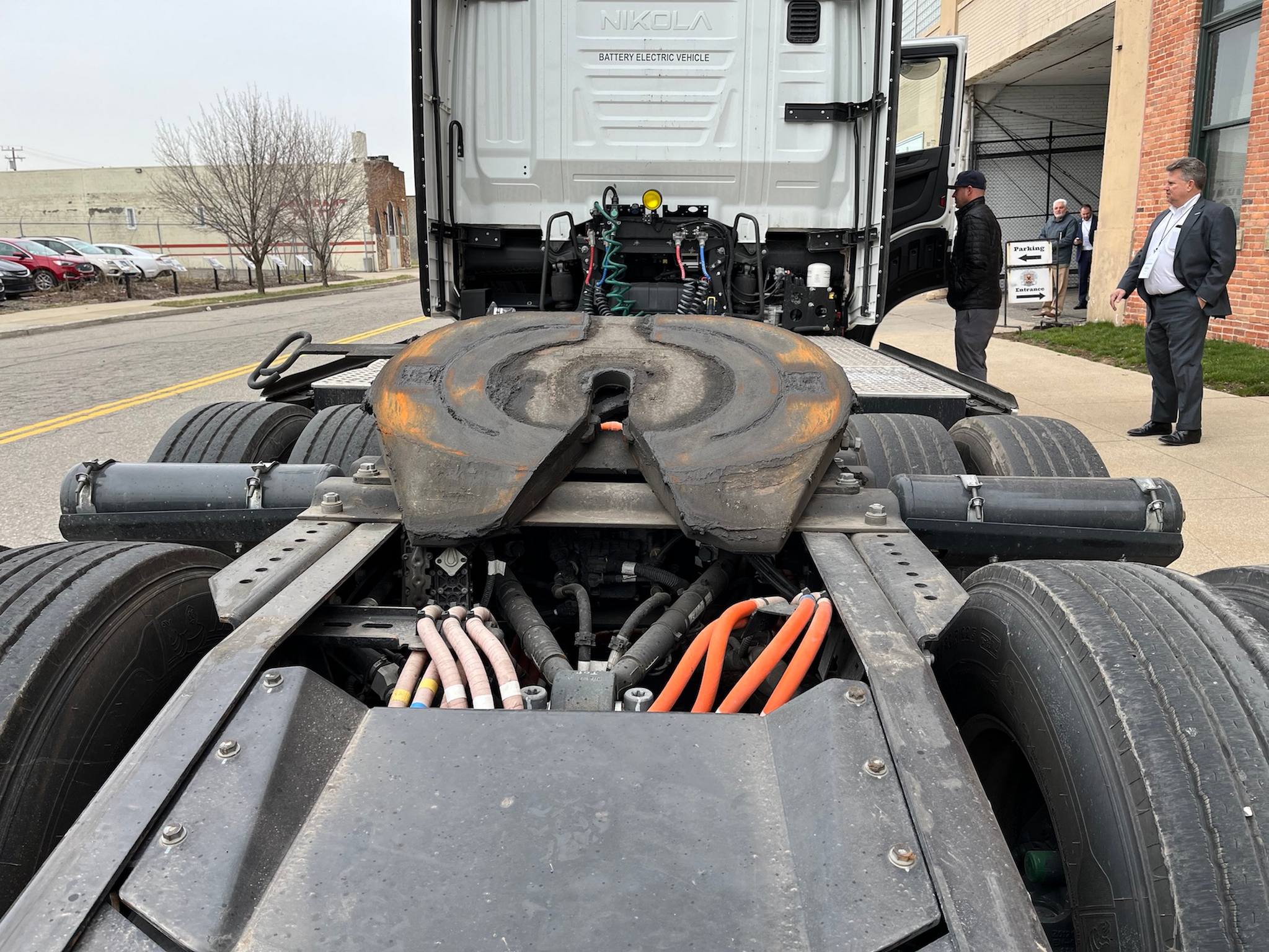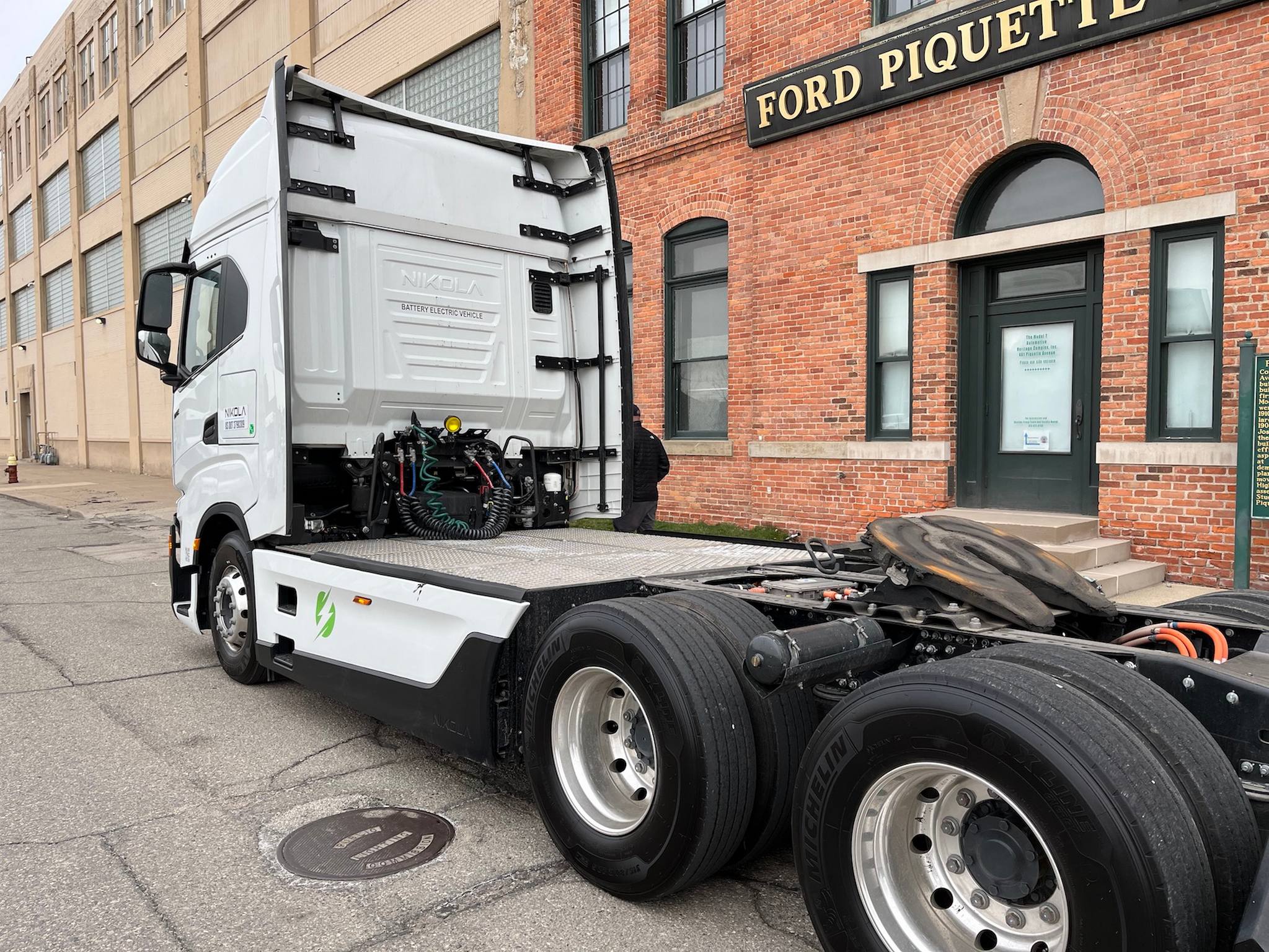At the old Ford Piquette Ave Assembly Plant in Detroit, where Henry Ford’s business empire began, the new leadership of Nikola Corp assembled a group of interested people, hoping to allude to a similar path to success with their own company.
Before a crowd of over 100 guests, President and CEO of Nikola, Michael Lohscheller proudly announced that his company has now taken 100 orders for their new hydrogen fuel cell EV Class 8 truck, something many didn’t think would ever happen. He then briefly discussed his company’s products and laid out their business plan to become the leader in EV semi-truck production.
Pointing out that it takes 4900 mature trees to offset the carbon dioxide of a single diesel truck in one year, he espoused the necessity and value of EV trucks. One Nikola truck offsets 109 cubic tons of CO2 per year. If buyers could successfully switch over part of their fleets to electric and fuel cell Class 8 semi-trucks, they could make a noticeable difference in their carbon footprint and improve our air quality.
Several companies, such as Walmart, Alta Equipment Rentals, Anheuser-Busch, and Saia, have all recognized a need to responsibly safeguard the environment and have expressed a desire to do their part by committing to zero-emissions transportation fleets.
With two factories, one in Ulm, Germany manufacturing for the European market and one in Phoenix, AZ, serving the North American market, Nikola builds two models of Class 8 transport trucks: a battery-powered EV model (BEV) and a hydrogen fuel cell model (FCEV). The BEV model has a range of approximately 330 miles, which limits it to moving freight across cities, between close regional cities, or from production facilities to local ports, while the FCEV has a longer range of nearly 500 miles with a 20 minute refueling time, making it ideal for over-the-road long-distance trucking. Given the better performance and the logistics company interest in their hydrogen fuel cell truck, Nikola has wisely determined that there’s more promise in the fuel cell trucks and are actively looking to build upon this interest.
Nikola also stated that’s it’s hard at work developing autonomous operating systems that will hopefully be available in a few years.
In North America, there are 3 sales zones for Nikola trucks: the East Coast zone, the West Coast Zone, and the Midwestern/Southern zone. While there are some states not included in the sales zones, it’s possible that they may be included at a later date.
Cary Mendes, president of HYLA (HYdrogen NikoLA), Nikola’s new energy company, then discussed their plan to support the new hydrogen fuel cell vehicles that Nikola is building. Referencing the birth of the automobile again, he pointed out that a new infrastructure will have to be created and built. HYLA is currently constructing several hydrogen production stations around North America that will use the abundance of green energy to convert water or methane into hydrogen gas. The goal is to produce 300 tons of H2 per day. This is enough to power 700 trucks. HYLA’s goal is to get the price down to the equivalent price of diesel fuel, making it an even proposition for potential buyers.
This gas will then be transported to refueling sites near Nikola customer’s facilities. Building these facilities will take a few years, so HYLA has created a mid-term solution by creating a fleet of mobile hydrogen refueling vehicles. These refuelers can hold 1,000 cubic feet of hydrogen gas and will show up daily to clients facilities to fuel their fleet of hydrogen fuel cell trucks until the refueling centers are completed. This removes the risk of buying a fuel cell truck. These refuelers will also be available to other fuel cell vehicles, not just Nikola products. To prove their progress, HYLA announced that 4 refueling stations are in place already: Sacramento, CA; Ontario, CA; Long Beach, CA, and Colton, CA – all major shipping hubs. They anticipate 60 more by 2026 – just three years away.
Lohscheller is quick to point out that this operation and the 100 fuel cell truck purchase orders would likely not have happened if it weren’t for the incentivization by the state of California, the United States federal government, and the help of several private capital firms. Building a new infrastructure base is an extremely expensive proposition and it couldn’t be done without partners. Much like at the birth of the gasoline car.
After the discussion, we were given an opportunity to take a brief ride in one of two Nikola TRE battery EV trucks. The trucks look like standard semi cab-over trucks but with a much cleaner design that looks far more aerodynamic and modern than most trucks. Open the passenger door and climb up three vertical steps and you climb into the most spacious truck cab you’ve ever seen. NBA players could easily stand in the cab without their heads touching the roof. On the driver’s side, the driver sat in a comfortable looking seat. Before him was a moderately sized steering wheel flanked by two large digital screens displaying information. Behind the steering wheel was a digital vehicle information display, showing a speedometer and several other gauges. Behind the seats was a flat shelf wide enough to sleep on, so there will likely be sleeping accommodations available to order.
I took my seat, buckled up, and watched the driver press the start button. The quiet whine of electrical equipment developed. The driver released the air brakes and the TRE began gliding up the road. He took it slow at first because the road was so badly potholed. The truck bounced a bit over the bumps, but it was never harsh. When we reached a main road, the ride improved and the driver pulled out into traffic and accelerated. The soft whine intensified a bit as the truck glided forward quickly, pressing me back into the seat a bit. “With a trailer attached, you’d still feel this acceleration. It has so much torque that you barely notice there’s a load back there.”
Like many EV’s, the TRE has adjustable regenerative breaking. The default setting of the TRE is full-regen. Lifting your foot from the throttle engine-brakes the truck noticeably. This can be adjusted for less intense regeneration but most will likely strive for that additional charge.
What’s most startling about the Nikola TRE is the quietness. It’s strange to not hear the noisy diesel clatter at idle, the straining and pressurized movement of massive volumes of air as the engine struggles to pull the weight behind it, nor smell the oily diesel exhaust. The TRE is so much cleaner than a traditional diesel truck that the grease on the rear connection plate seems unusually out of place. You can easily carry on a conversation in the truck cab, without having to raise your voice – its that quiet.
We drove a few miles over surface streets, the ride smooth and quiet and comfortable, then returned to the Piquette Assembly Plant, where I opened the door, turned backwards, and carefully descended the ladder steps to the street.
The Nikola TRE is a real truck and available for sale now, both as a traditional EV or as a fuel cell EV (FCEV). These zero-emission trucks are an interesting proposition and it will be interesting to see if they chip away at the diesel truck market over time to take a dominant share. There’s a lot of promise and potential, especially in big cities and states concerned about carbon emissions.

